Reassessing 1989
Amazing events unfolded in Europe thirty years ago. The states and societies of Eastern Europe invented a new model of revolution, “a non-violent, negotiated revolution, the model of 1989 replacing the model of 1789 and 1917,” argues Timothy Garton Ash. Soon followed the almost entirely peaceful dissolution of an authoritarian nuclear power and transitions to liberal democracy across Central and Eastern Europe.
There is every reason, especially in trying times, to celebrate the astounding events of 1989 and remember what societies can achieve. But there is also good reason to reassess this momentous year. There is a version of history where there was one 1989, when democracy vanquished communism, a wall fell, and the path opened toward “Europe whole free and at peace” (in the words of President George H.W. Bush) and a “new era for democracy” (as the Paris Charter has it). But today we do not find ourselves in that world without history. This is at least in part because we were wrong about 1989, or at least guilty of severe oversimplification. There was not one 1989 story; there were four. And the legacies of all four have their traces in the world we find ourselves in now – a world where the fate of liberal democracy globally, and even within our own societies, seems a lot less certain than it once did.
Intro by Rachel Tausendfreund
Click to download the full report here or read the individual sections below.
Liberal Overreach and the Misinterpretation of 1989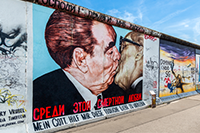
When the Berlin Wall fell 30 years ago, many in the West dreamt of a Europe whole and free and at peace. This was back when the nations of Europe and North America agreed on the Paris Charter and its fairy-tale ending, a “new age of democracy, freedom and unity” for Europe, and implicitly, for the entire world. It turned out somewhat differently.
The End of Techno-Utopianism

The optimism over the future of democracy globally that dominated U.S. foreign policy circles in the early 1990s had a tech companion, similar to the neoliberal faith in markets.
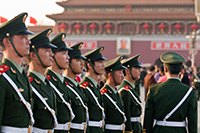 1989 with Chinese Characteristics
1989 with Chinese Characteristics
While the 30th anniversary of the peaceful revolution that led to reunification of Germany and the end of the Soviet Union is celebrated in the West, China’s leadership had hoped their 1989 would go unremembered.
Yugoslavia 1989: A Story of Unfated Events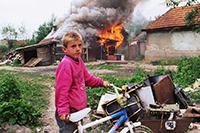
It is tempting to look back into the history of socialist Yugoslavia and see the bloodshed of the 1990s as the culmination of an inexorable march of history. But in 1989 very few Yugoslavs saw the wars coming – and, indeed, options presented themselves that could have led the multinational state of 23 million people in other directions.
“Ideological compet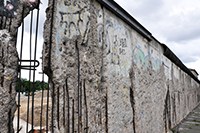 ition is actually good for us.” Interview with Timothy Garton Ash
ition is actually good for us.” Interview with Timothy Garton Ash
RT: You were on a panel at Brussels Forum where you discussed 1989 and I’m going to ask you to start there. You said 1989 was the best year in European history. Tell us why.
The Mixed Fruits of Poland’s Freedom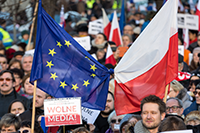
Thirty years after leading the democratic transition in Central Europe, Poland is struggling to uphold democratic institutions and discover a sense of political community.
Lingering Security Imbalances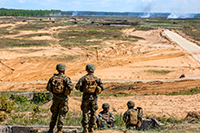
By Alexandra de Hoop Scheffer and Martin Quencez
The transatlantic relationship has experienced some turbulence in the decades since the Cold War ended, but populations and leaders have largely remained committed to the raison-d’être of the transatlantic strategic partnership.
F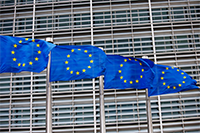 rom Triumph to Travail: The EU's 1989 Legacy
rom Triumph to Travail: The EU's 1989 Legacy
As party systems across Europe adjust to changed popular demand at rapid speed, the European Union struggles to find its bearings in this whirlwind of political transformation.
Of Leadership And Burdens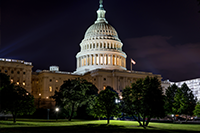
In evaluating history, T. S. Elliot reminded us that human beings often “had the experience but missed the meaning.” In efforts to make sense of our past, we look for patterns to wrap around the path of experiences.
The Decline of Employment  Protection and the Rise of Precarious Work
Protection and the Rise of Precarious Work
By 1989 the employment landscape in the United States and Europe had changed significantly from the immediate post-Second World War decades. Between 1960 and 1973 the unemployment rate as a percentage of the total labor force averaged 2 percent or below in Western Europe’s big economies and 4.8 percent in the United States, but between 1990 and 1995, the average unemployment rate in the United States was 6.4 percent and between 7 and 10.7 percent in Germany, France, and the United Kindgom.
Authoritarian Advance: How Authoritarian Regimes Upended Assumptions about Democratic Expansion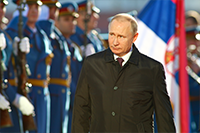
By 1989 the employment landscape in the United States and Europe had changed significantly from the immediate post-Second World War decades. Between 1960 and 1973 the unemployment rate as a percentage of the total labor force averaged 2 percent or below in Western Europe’s big economies and 4.8 percent in the United States, but between 1990 and 1995, the average unemployment rate in the United States was 6.4 percent and between 7 and 10.7 percent in Germany, France, and the United Kindgom.
A Silicon Curtain is D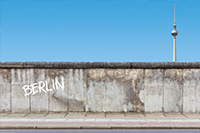 escending: Technological Perils of the Next 30 Years
escending: Technological Perils of the Next 30 Years
It could be said that the principal story of 1989 in Europe is a story about technology – of radio and information crossing the East-West divide to bring down the Berlin Wall. Indeed, the post-communist narrative became that more connectivity and more connection meant more freedom and more democracy. It was on the wave of this narrative that the Internet became the world’s ultimate connector.